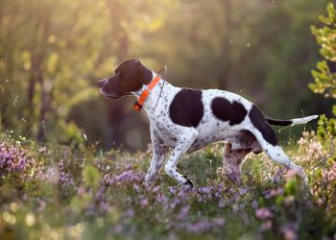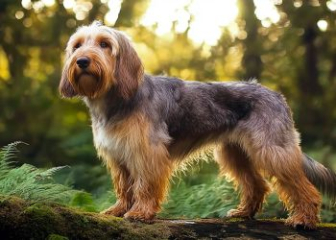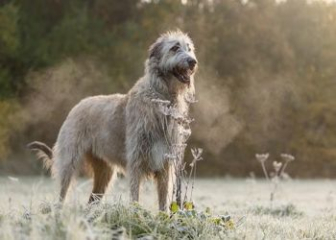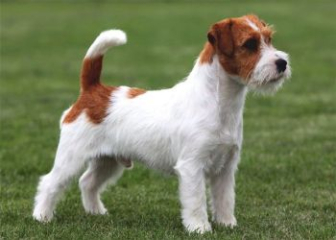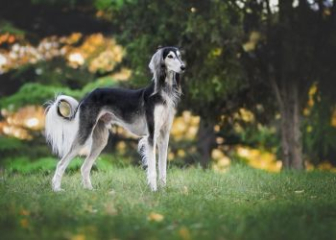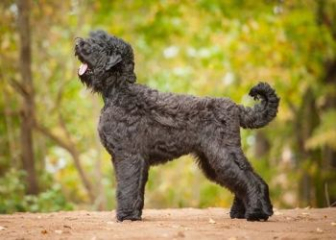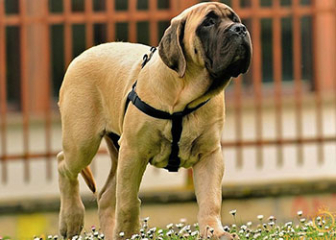Great Dane (German Mastiff), the gentle giant
Blog | by
The Great Dane, also known as the German Mastiff, is one of the largest dog breeds in the world, with a height of 71 - 86 cm, a weight of 45 - 90 kg, and a lifespan of 12 - 13 years.
The Great Dane (German Mastiff) is a giant dog breed with impressive height and weight. Despite its massive appearance, this breed is very gentle, friendly, and courageous, making it suitable as a companion dog or a guard dog.
To learn more about this fascinating breed, check out the detailed information dog breed have shared below!
Where Does the Great Dane Come From?
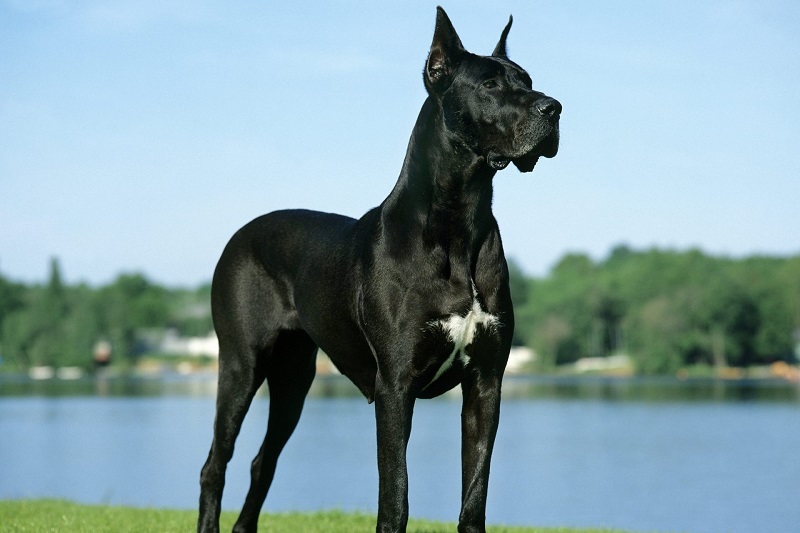
Image of a purebred black Great Dane
The Great Dane has been around for more than 3,000 years, dating back to ancient Greece. This breed was also found in Egypt and Rome.
Many sources suggest that the German Mastiff (Great Dane) was developed by crossbreeding Old English Mastiffs, Greyhounds, and Irish Wolfhounds.
Belonging to the Mastiff group (giant dogs), Great Danes possess incredible strength. They were once powerful enough to take down bears, wild boars, and other large animals. Originally, they were bred as guard dogs and draft dogs.
By the late 1600s, German nobles began keeping Great Danes as estate protectors.
In the 1800s, breeders continued refining the Great Dane, shaping it into the gentle and affectionate companion dog we know today.
The Great Dane – A Giant Dog Breed
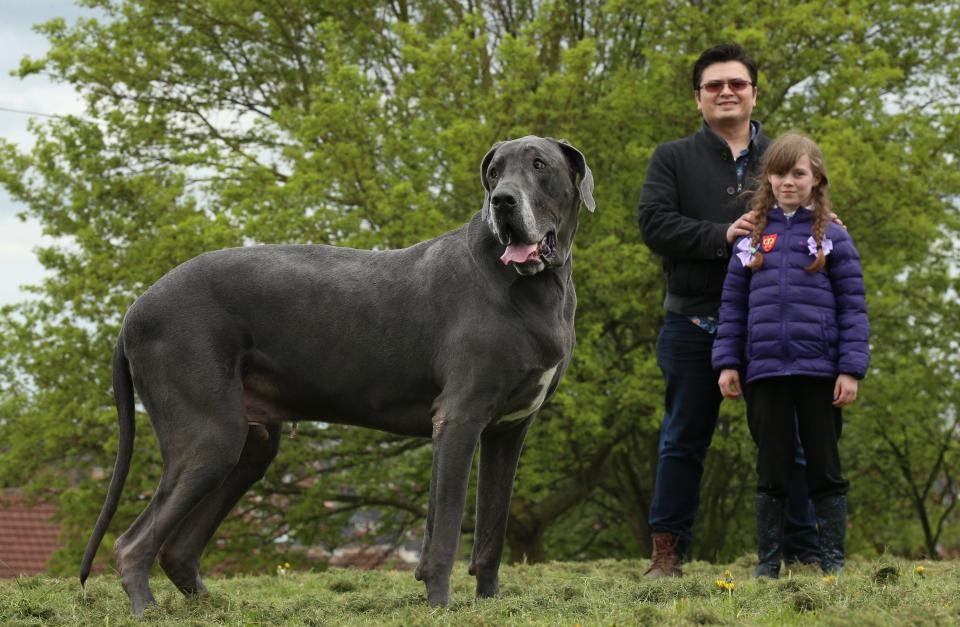
The Great Dane with its massive physique.
The Great Dane holds the Guinness World Record as the tallest dog breed. Despite its imposing size, this breed maintains a well-proportioned and elegant build. Let’s take a closer look at its physical characteristics:
- Height: Males: 76–86 cm, Females: 71–81 cm
- Weight: Males: 54–90 kg, Females: 45–68 kg
- Face: Long, narrow head, prominent forehead, small eyes, large nose, and broad square muzzle
- Body: Tall and well-proportioned, broad chest, muscular frame
- Tail: Long, thick at the base, tapering towards the end
- Legs: Long, straight, muscular, with large and sturdy paws
- Coat: Short and smooth
- Common coat colors: Brindle, Fawn, Blue, Black, Harlequin (white with black patches), Mantle (white with gray patches)
- Gait: Agile and majestic
The Personality of the Great Dane (German Mastiff)
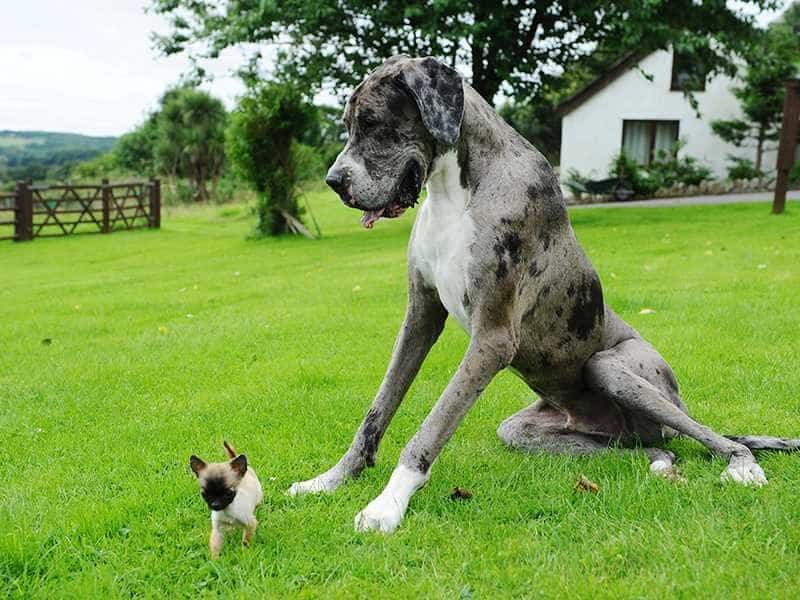
The Great Dane being friendly with a small dog.
Although the Great Dane is an enormous breed, it is known for its gentle, intelligent, and loyal nature. Let’s explore its temperament:
Friendly and Kind
Many people wonder if the Great Dane is aggressive, but the answer is no. This breed is incredibly gentle and kind-hearted. It naturally takes on the role of protector, watching over its owner and loved ones. Great Danes are especially good with children and other pets, though they may be less tolerant of unfamiliar dogs.
Obedient and Easy to Train
The Great Dane is highly intelligent and eager to please, making it easy to train. Unlike some stubborn breeds, it quickly follows commands and enjoys making its owner happy. These traits make the German Mastiff an excellent candidate for both a guard dog and a loyal companion.
Rarely Barks
Unlike many other breeds, the Great Dane is not prone to excessive barking. It only barks when necessary, such as to alert its owner of danger or when feeling threatened.
Brave and Loyal
Great Danes are incredibly loyal dogs that enjoy being close to their owners—even seeking affection like a small lap dog. While they are not naturally aggressive, they are also not timid. Instead, they remain calm and observant, assessing situations before responding.
How to Care for and Raise a Great Dane
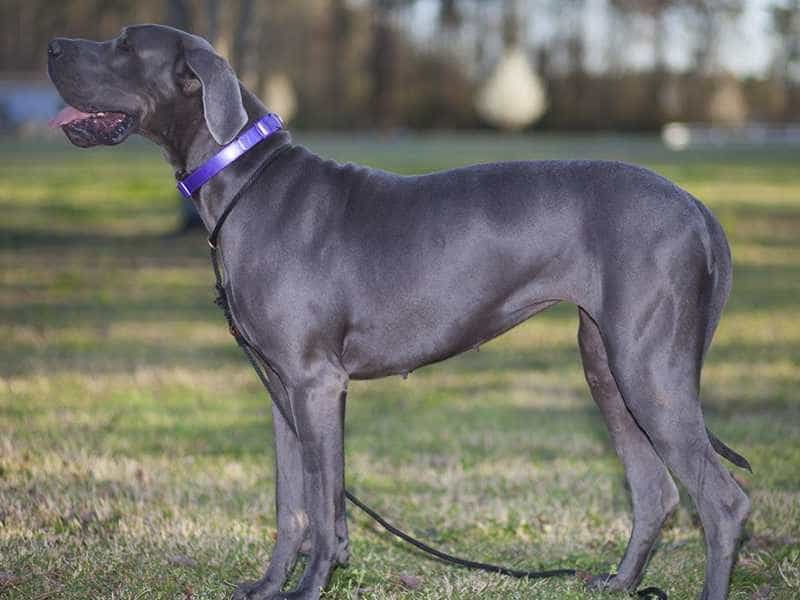
Image of a purebred black Great Dane.
Due to its enormous size, the Great Dane requires special care and nutrition. Below is a detailed guide covering everything from diet to hygiene and training.
Nutrition for a Great Dane at Different Life Stages
The German Mastiff grows rapidly, so it needs an appropriate diet for each age stage. Here’s a breakdown:
Puppy Great Dane (2–6 months old)
- Divide meals into 3–4 portions per day.
- Provide protein-rich foods from meat to support proper development.
- Supplement with calcium and vitamin D3 to strengthen bones.
Adult Great Dane (Over 6 months old)
- Reduce feeding to 2 meals per day but maintain large portions.
- Ensure a balanced diet of meat, eggs, vegetables, and nutrient-rich grains.
- Avoid excessive starch and fat intake.
- Provide plenty of clean water.
Health Care for a Great Dane
To keep your Great Dane healthy and prevent diseases, vaccinations and regular health checkups are essential. Take note of the following:
- Ensure full vaccination, including 5-in-1 and 7-in-1 vaccines to protect against canine distemper, parvovirus, flu, hepatitis, leptospirosis, coronavirus, and rabies. Deworming should be done per veterinary advice.
- Schedule routine checkups every six months or as recommended by the vet.
- Only vaccinate a healthy Great Dane and ensure booster shots are given on time for full effectiveness.
Grooming and Hygiene for a Great Dane
Since the Great Dane has a short, thin coat, grooming is relatively easy, but some care is still needed:
- Brush weekly to remove dirt and loose fur.
- During shedding seasons, brush daily to minimize hair loss.
- Bathe at least once a month or when the dog gets too dirty or smelly.
- Trim nails and brush teeth regularly.
Training a Great Dane
Since Great Danes are large and energetic, proper training is crucial for discipline.
- Start training early to help your Dane control its strength.
- Teach basic commands like sit, stand, come, stay, and down.
- Socialize the dog early by introducing it to other pets and children to prevent aggressive tendencies.
- Avoid teaching the dog to jump on people, as its size can unintentionally cause injuries.
Ideal Living Environment for a Great Dane
Given its massive size, the Great Dane requires a spacious environment. A house with a yard is ideal for allowing free movement and exercise. Additionally, this breed is sensitive to cold, so extra warmth is necessary during winter.
Common Health Issues in Great Danes and Prevention
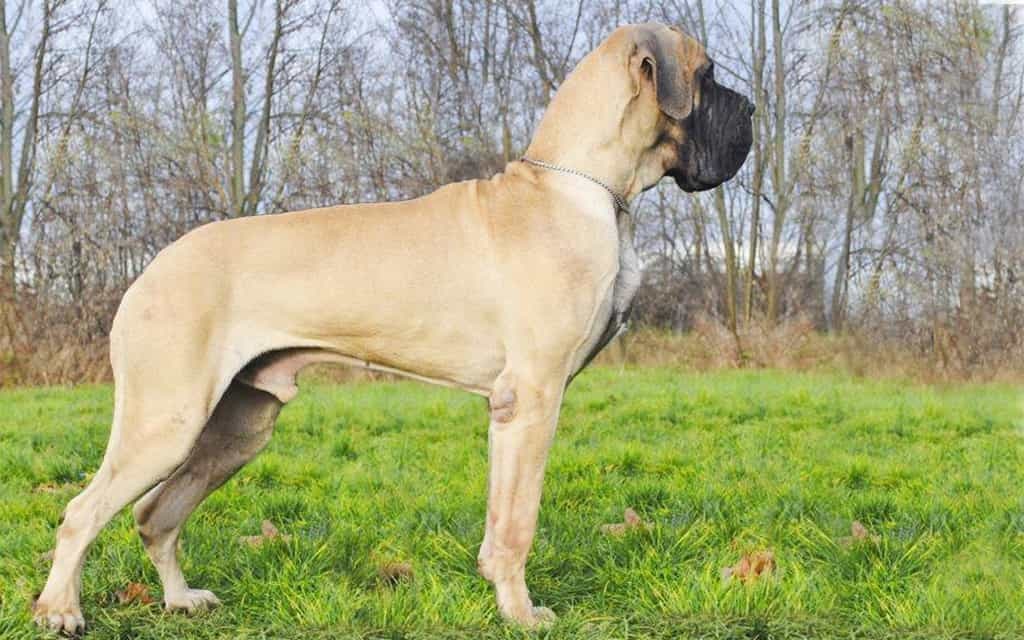
Great Danes are prone to joint problems due to their massive size.
Because of their large bodies, Great Danes are susceptible to weight-related and genetic diseases. Below are some common health issues this breed faces and ways to prevent them.
Gastric Torsion (Bloat)
Bloat, or gastric dilatation-volvulus (GDV), is one of the most life-threatening conditions in Great Danes.
- Cause: Eating too fast, exercising immediately after a meal, stomach twisting.
- Symptoms: Abnormally bloated belly, dry heaving, excessive drooling, sudden weakness.
- Prevention & Treatment:
-
Feed multiple small meals instead of one large portion.
-
Avoid exercise immediately after eating.
-
If symptoms worsen, seek veterinary attention immediately.
Hip Dysplasia
Hip dysplasia is common among large breeds, including Great Danes.
-
Cause: Genetics, rapid growth, excessive exercise at a young age.
-
Symptoms: Limping, reluctance to run or jump, pain when touched on the hips, weak hind legs.
-
Prevention & Treatment:
-
Maintain a healthy weight.
-
Avoid excessive physical activity in puppies.
-
Provide calcium, Omega-3, and glucosamine supplements.
-
Dilated Cardiomyopathy (DCM)
Great Danes have a high risk of heart disease, particularly dilated cardiomyopathy (DCM).
-
Cause: Genetics, deficiency of Taurine & L-Carnitine in diet.
-
Symptoms: Rapid breathing, fatigue, loss of appetite, weight loss, swollen abdomen, swollen legs.
-
Prevention & Treatment:
-
Gentle exercise.
-
Regular heart checkups.
-
Supplement Taurine and L-Carnitine (found in beef, fish, and eggs).
-
Ear Infections
Great Danes have large, floppy ears, making them prone to ear infections due to bacterial buildup.
-
Cause: Poor hygiene, bacterial or fungal infections.
-
Symptoms: Itchy ears, frequent scratching, foul-smelling ears.
-
Prevention & Treatment:
-
Clean ears regularly.
-
Use vet-recommended antibacterial and antifungal treatments.
-
Great Dane Prices & Buying Guide
Are you wondering how much a Great Dane costs? Check out the price chart below.
Great Dane Prices in Hanoi & Ho Chi Minh City
| Type | Price (Approx.) |
|---|---|
| Great Dane Puppy (2–3 months, born in Vietnam) | 6–9 million VND |
| Great Dane (Over 1 year old, born in Vietnam) | 15–20 million VND |
| Purebred Great Dane (Imported from Europe) | 150+ million VND |
Buying Tips for a Great Dane in Vietnam:
- Check the dog’s origin and vaccination records to avoid genetic or common illnesses.
- Consider your finances and living space, as Great Danes require special care and large spaces.
- Only buy from reputable breeders with clear documentation.
Fun Facts About Great Danes
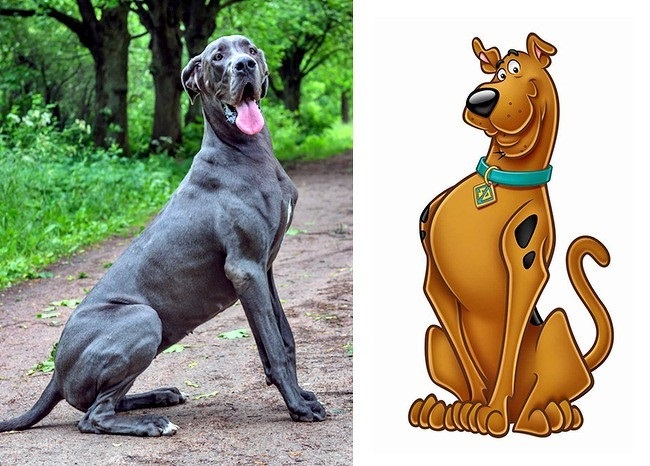
Scooby-Doo was modeled after the Great Dane.
Did you know these amazing facts about Great Danes?
- Tallest dog breed in the world – Some can reach over 1 meter on all fours and over 2 meters standing on hind legs.
- The tallest Great Dane ever recorded was named Zeus, measuring 111.8 cm (44 inches) tall.
- The famous cartoon dog Scooby-Doo was based on a Great Dane. However, unlike the real breed, Scooby is cowardly!
- Despite the name "Great Dane", this breed has no relation to Denmark.
- A fully grown Great Dane can consume 2.5–4 kg of food per day!
Beautiful Great Dane Images
Check out these majestic and adorable Great Dane photos:
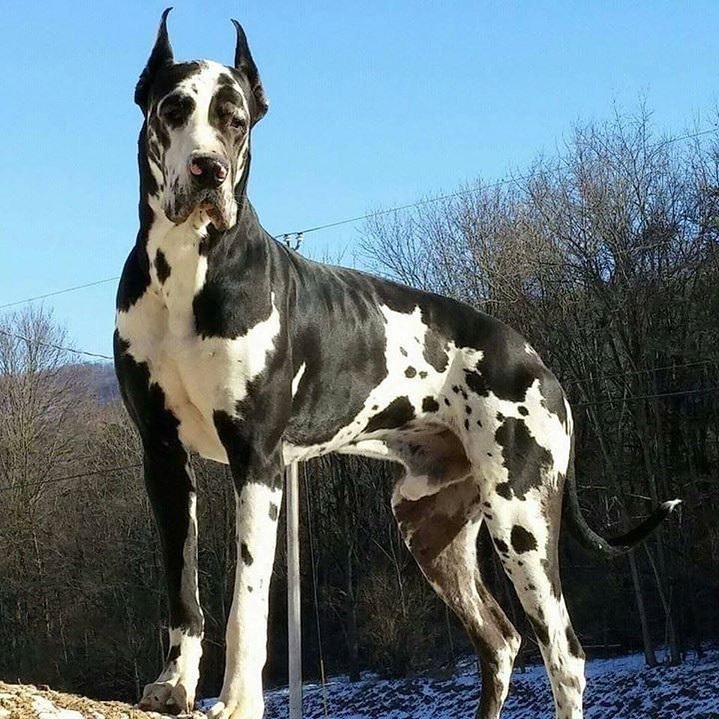
A giant Harlequin Great Dane (White with black spots).
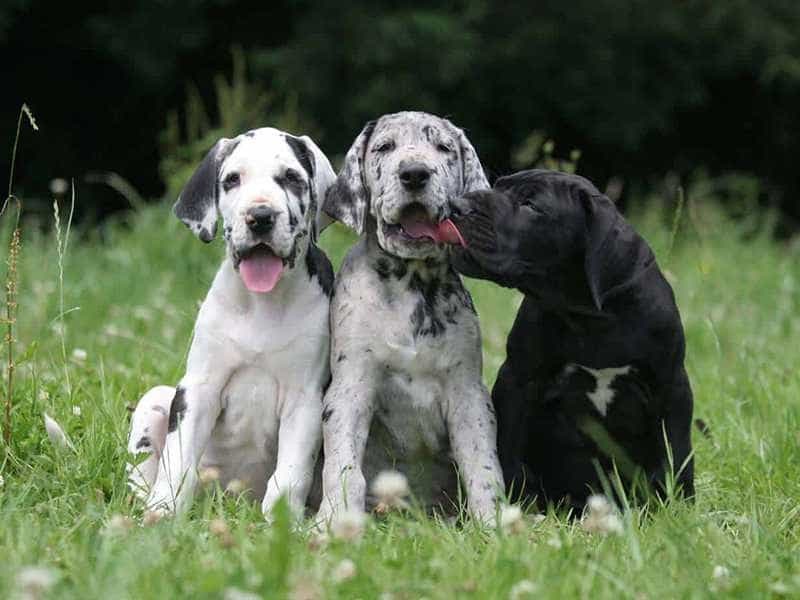
Cute Great Dane puppies.
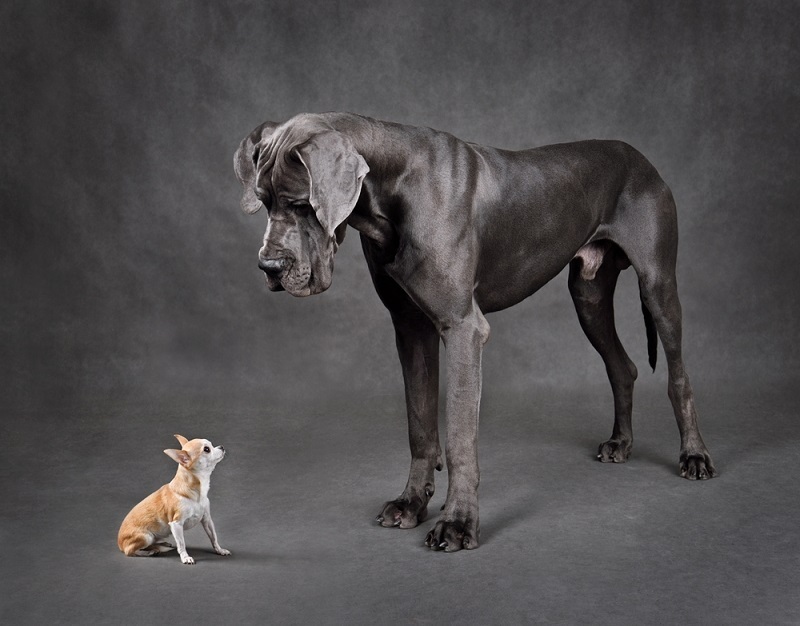
A Great Dane standing next to a Chihuahua—showing their massive size difference.
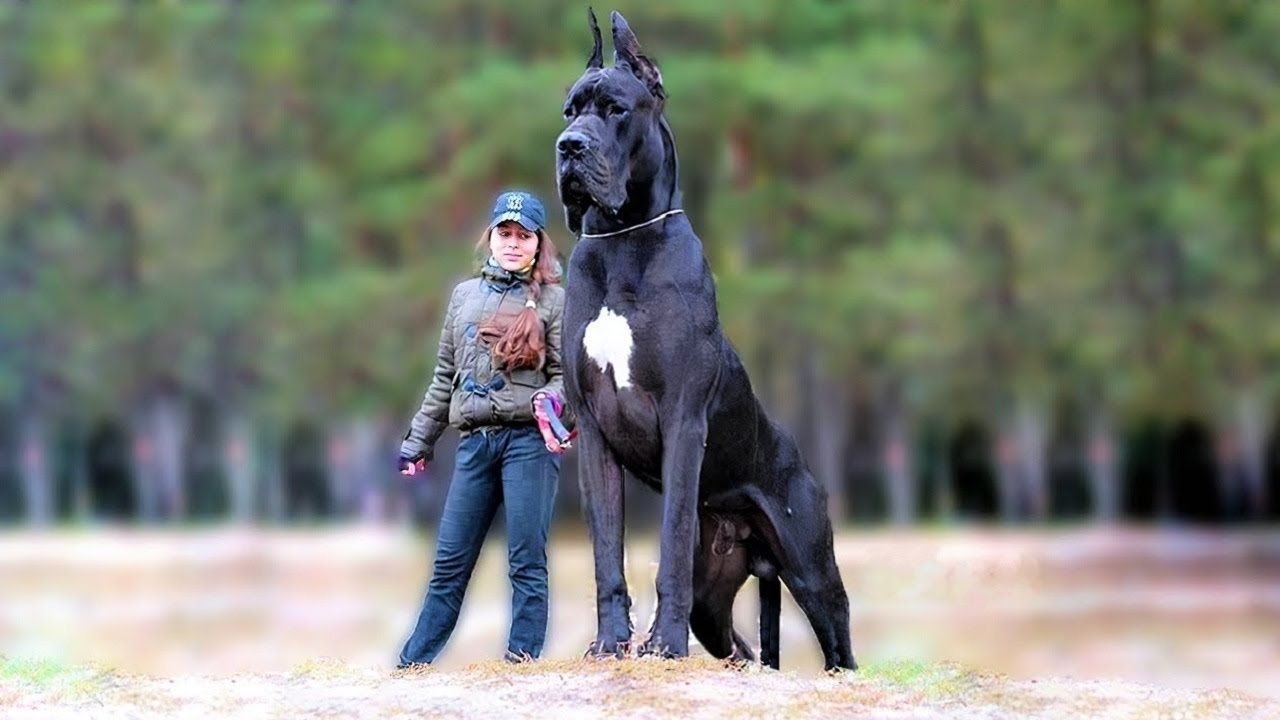
A towering Great Dane showing off its incredible height.
This guide has covered everything about Great Danes—from their origin, appearance, and personality to care tips, health issues, and pricing. Hopefully, this information will help you confidently raise and care for your own gentle giant!
Don't forget to visit dogbreed.wiki Blog section for more articles on different dog breeds!

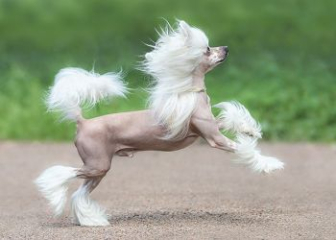

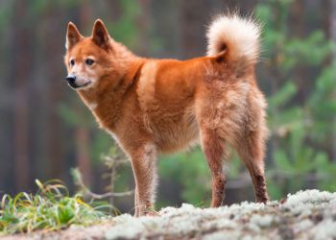

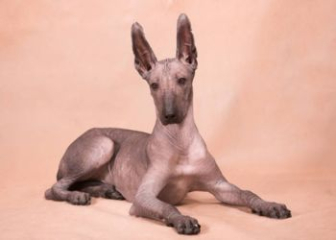
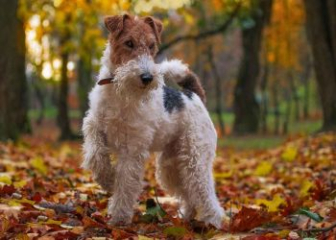


_350x250.jpg)

